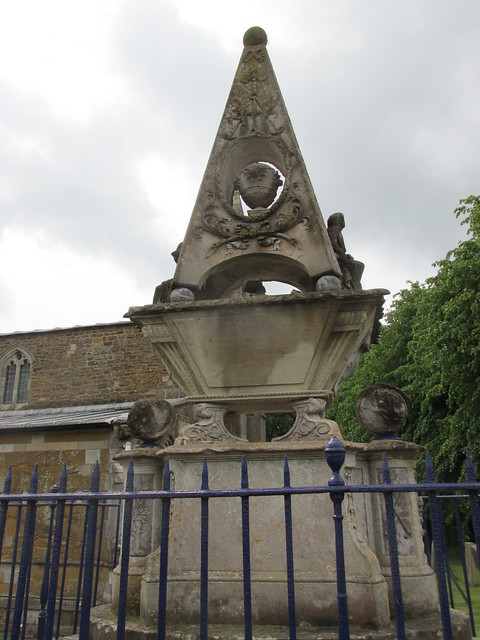Monday, 13 June 2016
Morning Squire!
Limestone monument in the churchyard at St James's Church, Burton Lazars, Leicestershire. Dedicated to local weaver William Squires, the monument is one of the largest and most ambitious in the county.
When William Squires died in 1781 he had amassed a small fortune, for his time. in excess of £600. He ordered that part of the sum should be used to build an impressive tomb to house his corpse. He intended that the remainder should be used to educate the local poor, but there was so little left over from the creation of his monument that his good intentions failed to reach fruition.
The 20 feet high monument is elaborately carved with many different symbols and it is thought that it was once painted to look like marble, and gilded.
It was added to the Buildings at Risk Register in 1998 but a programme of repairs and restoration in 2014 mean that it was removed from the register in 2015.
It's Grade II* listed.
Sunday, 5 June 2016
Historic Hull
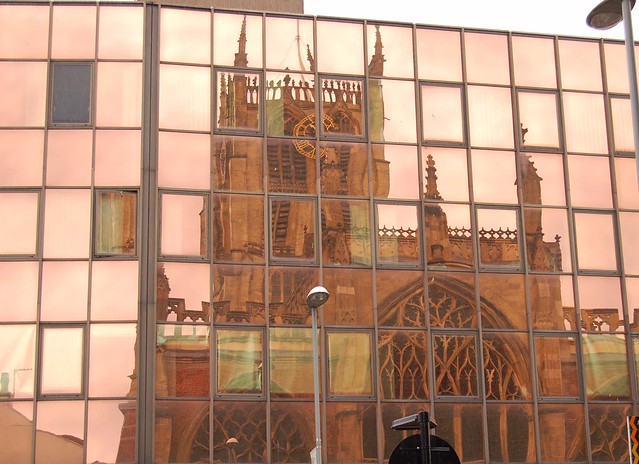 |
| Holy Trinity Church, Hull reflected in nearby buildings |
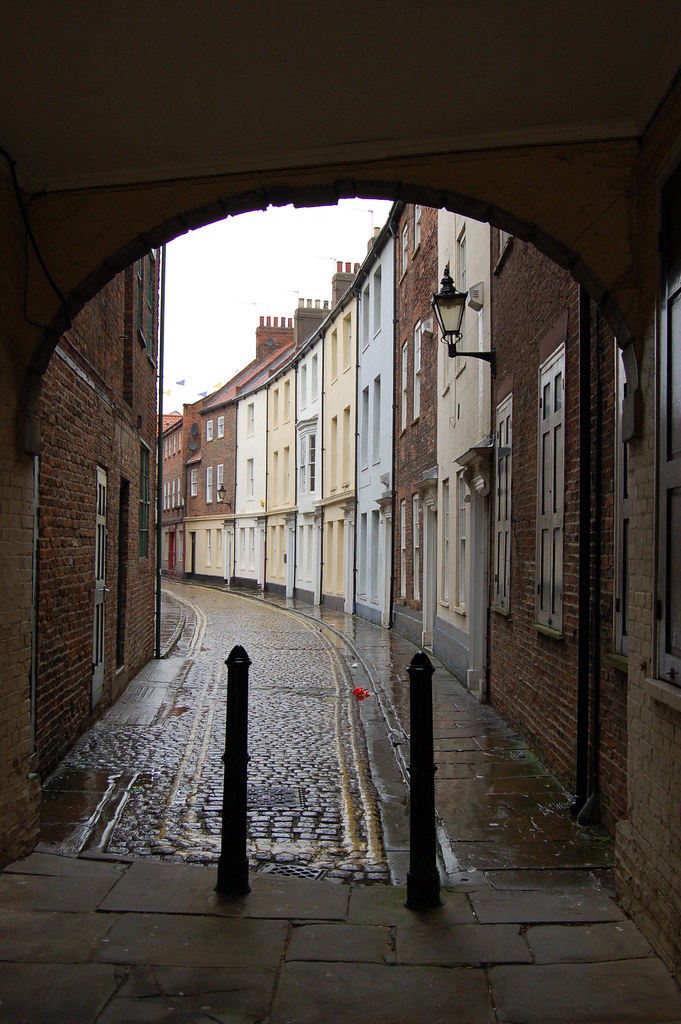 |
| One of Old Hull's cobbled streets |
Hull was one of the towns in the Hanseatic League, a group of ports around the Baltic and North Sea who traded as an alliance, ensuring prosperity and success for their merchants. The League mainly traded timber, furs, resin (or tar), flax, honey, wheat, and rye from the east to Flanders and England. Cloth and manufactured goods went the other way. Metal ores, particularly copper and iron, and herring came southwards from Sweden. (Thank you Wikipedia!)
As part of the League, Hull continued to grow and its merchants became very rich. Warehouses and trading centres can still be identified among the winding, cobbled streets of its old town.
In 1369 a religious guild was set up in association with Holy Trinity Church, which soon became a Seamen's Guild, dedicated to the welfare and safety of mariners. It still exists today, in the form of Trinity House, the body responsible for maintenance of the UK's lighthouses.
By the late 16th century Hull was a major whaling port as well as a key point of entry and egress for goods from all over the world. Then, 50 years later, Hull became a significant place in the English Civil War when, in 1642, the city governor Sir John Hotham refused entry to the city to King Charles I.
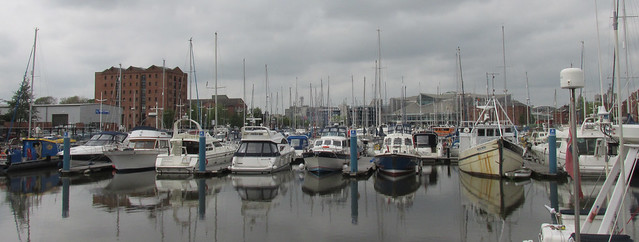 |
| Hull Marina today |
Hull Dock Company, the first statutory dock company in Britain, was founded in 1773 by the Corporation. It remained in action until 1963, when the central dock closed and was converted to the present day Marina. The town is still a major port, with cargo ships and passenger ferries sailing daily.
 |
| Fish in the floor |
For many years Hull was a major fishing port although the Icelandic cod wars put an end to the trade. It is still commemorated by an art trail around the streets with life-size images of fishes to be found in strange places: at any point looking down you might find yourself among a shoal of mackerel, whitebait or anchovies carved into the paving stones.
Of course, Hull's latest claim to fame is that it has been named as 2017 City of Culture.
Some famous Hull folk
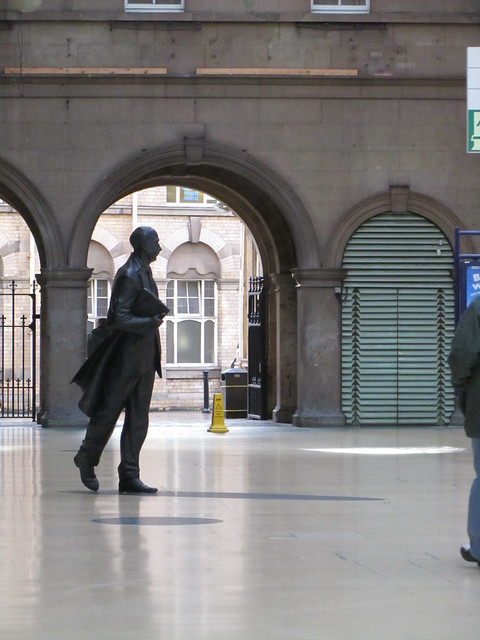 |
| Philip Larkin statue: Hull rail interchange |
- There's anti-slavery campaigner William Wilberforce, of course.
- The poet Andrew Marvel, born here 1621.
- Mathematician John Venn, responsible for the Venn diagram, born in Hull in 1834.
- Philip Larkin, Coventry-born poet, lived in Hull for the majority of his life as the resident librarian at Hull University.
- Sir Andrew Motion, former Poet Laureate.
- Stevie Smith, poet and novelist best known for her poem "Not Waving but Drowning".
- J. Arthur Rank. (Yes, THAT one.)
- Arthur Lucan aka Old Mother Riley.
- Amy Johnson, first woman to fly solo from Britain to Australia.
- Actor Ian Carmichael.
- Comedienne Maureen Lipman.
- Actor John Alderton grew up in Hull and attended Kingston High School.
- John Godber, playwright; Artistic Director of the Hull Truck Theatre Company.
- Mick Ronson, guitarist.
- Basil Brush's Mr Roy - Roy North.
- Norman Cook (also known as Fatboy Slim), moved to Hull in the 1980s.
- Archaeologist Paul Bahn.
Thursday, 2 June 2016
Wanted
Extracts from the Derby Mercury (1771/81) promising employment and good wages to the right people if they wanted to work at Arkwright's Mill. The world’s first successful water powered cotton spinning mill, built in 1771 by Sir Richard Arkwright at Cromford in Derbyshire. He was the first person to mechanise the whole process of cotton preparation and spinning, and subsequent weaving. From bale to cloth - all under one roof - with machines driven by the passage of river water over a wheel.
"Framework knitters and weavers with large families" (so they could do piece work at home and include the kids on the team).
"Boys and young Men may have Trades taught them, which will enable them to maintain a Family in a short Time." (Ditto. The bigger the family, the more people working for the mill!)
And yet Arkwright wasn't a bad man, by the standards of his day. He looked after his employees and provided homes in the village in sturdy, stone-built houses with gardens. Many of his workforce had probably been lead miners or agricultural workers and their mill conditions must have seemed almost luxurious by comparison.
"Framework knitters and weavers with large families" (so they could do piece work at home and include the kids on the team).
"Boys and young Men may have Trades taught them, which will enable them to maintain a Family in a short Time." (Ditto. The bigger the family, the more people working for the mill!)
And yet Arkwright wasn't a bad man, by the standards of his day. He looked after his employees and provided homes in the village in sturdy, stone-built houses with gardens. Many of his workforce had probably been lead miners or agricultural workers and their mill conditions must have seemed almost luxurious by comparison.
Subscribe to:
Comments (Atom)

